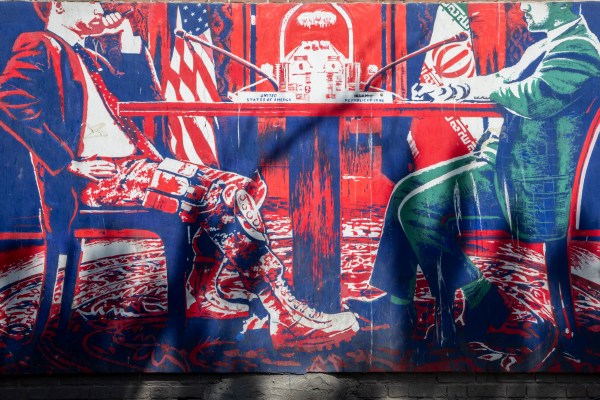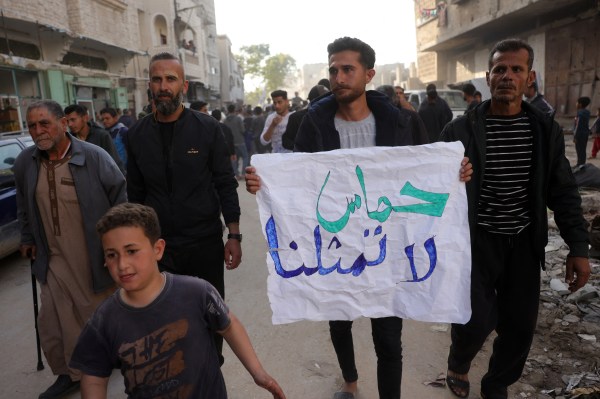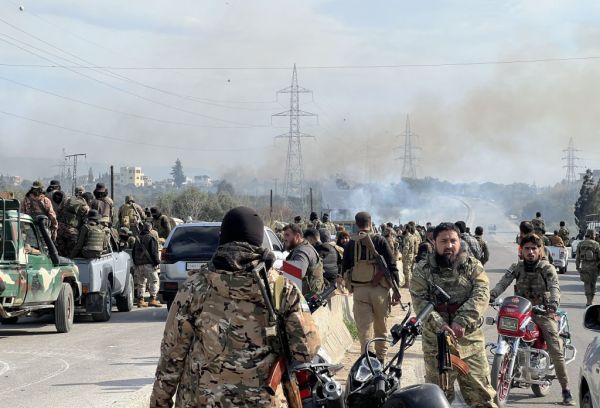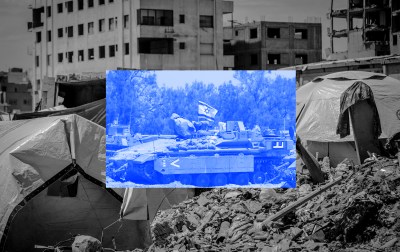Israeli Prime Minister Benjamin Netanyahu has unveiled a new plan for Gaza that signals a return to military occupation for an indefinite period. The announcement came after Israel’s security cabinet voted unanimously to expand operations in the Strip with the explicit aim of permanently defeating and rooting out Hamas.
According to Israeli officials, the plan known as Operation Gideon’s Chariots will be implemented immediately after President Donald Trump’s upcoming Middle East trip concludes this week, unless a last-minute hostage deal is reached before then. Trump’s visit—with stops in Saudi Arabia, Qatar, and the United Arab Emirates—is being treated as a window of opportunity for negotiations. If Hamas does not agree to a ceasefire and hostage exchange by the time Trump leaves the region, Israeli officials say a massive ground offensive to seize and indefinitely occupy all of Gaza will begin "with great intensity."
Tens of thousands of reserve soldiers are being called up in preparation as the Israel Defense Forces (IDF) plans to invade and capture the whole of Gaza, the culmination of a war that began with Hamas’ October 7, 2023, invasion, massacre, and abduction of hostages. Notably, Netanyahu’s ultranationalist allies like Finance Minister Bezalel Smotrich have openly embraced the term "occupation," vowing "no retreat from the territories we have conquered, not even in exchange for hostages." In practical terms, Israeli forces plan to flatten any remaining buildings and systematically destroy the entirety of Hamas’ extensive tunnel networks across Gaza.
The Gaza Strip’s 2.1 million Palestinians would be moved into a single "humanitarian zone" near Rafah in the south, tightly controlled by the IDF. Entry and exit to the zone would be screened, and there would be a resumption of humanitarian aid into Gaza, which has been paused since March. Under the new plan, aid would be distributed only to those vetted as not being Hamas-affiliated.
This scenario marks a major shift from Israel’s stance over the past 18 years, following the withdrawal of its civilian settlers alongside its troops from Gaza in 2005. Even in the context of the ongoing war in Gaza, Israel had not openly proposed long-term governance or occupation of the Strip again until now. Israeli opposition leader Yair Golan, a retired general, argued that the war against Hamas is “no longer a temporary operation but a move that prepares for a permanent presence,” warning the move would “cost us blood … through exhaustion and most importantly through losing our way.” Many within Israel’s security establishment are uneasy; former lawmaker Ofer Shelah cautioned that Israel would be assuming responsibility for 2 million Gazans with all the consequences that entails—from international backlash to massive economic and military burdens.
Meanwhile, the Trump administration has offered little or no opposition to the plan. Reports from Israeli officials suggest Trump is "not currently playing an active role" in Gaza ceasefire talks and has “given Netanyahu a green light to do as he sees fit.” Still, the significance of Netanyahu’s announcement cannot be overstated. By declaring Israel will reoccupy the strip, he is reversing decades of Israeli policy that sought to avoid a quagmire by not reabsorbing Gaza.
Perhaps more importantly, Netanyahu has for the first time admitted that the return of the hostages is not his top priority, saying “the supreme objective is victory over our enemies.” This is a shift that has left Israeli ceasefire negotiators “reeling.” Multiple family members of the hostages blasted the cabinet’s decision, saying the plan chooses “territory over freeing the hostages.” Public opinion in Israel appears to side with the families: 60 percent to 70 percent of Israelis oppose a major operation to reoccupy Gaza and instead support a deal to end the war and free the captives, according to Barak Ravid’s reporting in Axios. These Israelis fear the planned offensive may further imperil the 24 hostages believed to be still alive in Hamas captivity. But Netanyahu has opted to press ahead on a path that will be extremely difficult to reverse and may have risky and unpredictable consequences both for Israel, the Palestinians, and the region.
At the same time, a humanitarian catastrophe is unfolding in Gaza. Since early March, Israel has enforced a total blockade on the Strip, cutting off shipments of food, water, and fuel to prevent them falling into the hands of Hamas. As a result, no supply trucks have entered Gaza since March 2, when a U.S.-brokered ceasefire ended. Gaza’s local food production is negligible under current conditions, as fields have become battle zones and farmers can’t risk tending them, and fishermen are barred from the sea.
Although some food remains in specific locations, the ongoing military operations have left many communities' food supplies exhausted, clean water scarce, and people fighting over whatever scraps remain. In Gaza’s hospitals, doctors and aid workers paint a hellish picture: malnourished children with skeletal frames, surgeries performed without anesthesia, and a lack of basic medicines for common ailments like diabetes, hypertension, and heart disease. One displaced expectant mother, Ola al-Kafarna, described her plight to Reuters: "We stand up and get dizzy due to lack of food. There are no eggs, meat, food, or drink. We are tired."
Did Hamas realize when they chose to start a new war against Israel in October 2023 that this would be the position Palestinians would be facing in 2025?
The sheer scale of the horror, which has left some 80 percent of Gaza’s population displaced from their homes, has led many there to conclude that Hamas' actions brought unbearable suffering. As one Gaza resident told Reuters at a recent anti-Hamas demonstration, "People are exhausted and have no place to go. … Many [were] chanting ‘Out, Hamas.’… No one should blame them." This remarkable protest in late March saw hundreds of Palestinians in northern Gaza rallying and chanting, "Hamas out!" and "Enough wars!" Videos of the protests across Gaza reflected a rare public show of opposition to the terrorist group.
Indeed, the last 19 months of devastating war and humanitarian disaster has seen Hamas’ political standing in Gaza plummet. Although it is hard to poll a wartime population, and even though there have been allegations that Hamas has manipulated political polls for its own benefit, polling by the Palestinian Center for Policy and Survey Research (PCPSR) shows support for Hamas in Gaza has collapsed from 42 percent right after October 7, 2023, to 21 percent by January of this year. Another survey last October found 57 percent of Gazans considered the October 7 assault “the wrong decision,” a complete reversal from the initial jubilation among Hamas’ base.
The imposition of Israel's new plan to completely occupy and hold Gaza indefinitely would seem to be an absolute reversal of Hamas' long-term ambitions of dismantling Israel and replacing it with a Palestinian state. However, Hamas’ decline and likely long-term defeat by Israel does not automatically translate into a viable alternative for Gaza governance gaining ground. The Strip’s other political options are weak or tarnished. Fatah—the faction behind the Palestinian Authority (PA) in the West Bank and Hamas’ longtime rival—remains widely seen as corrupt and impotent, “weak and illegitimate” in the eyes of many Palestinians. No third force has emerged; instead, a plurality of Gazans (32 percent) now say no existing movement represents them.
“Hamas is collapsing, hated by the Palestinian people it falsely claimed to represent. But instead of responding with a vision for peace, the Israeli government is responding with bulldozers and bayonets.”
Hamas’ popularity on the broader Arab street has also suffered. Key regional backers like Qatar and Turkey have continued diplomatic support, but even they have urged Hamas to consider ceasefires and hostage releases. Hamas’ loss of credibility may be one of the few developments offering a glimmer of hope for a different future in Gaza, albeit a hope tempered by the chaos and suffering of the present.
Israel’s plan to indefinitely reoccupy Gaza raises existential questions about the future of the peace process, most urgently whether the long-fading prospect of a two-state solution can survive this war. The road map to peace laid out in the Oslo Accords in the 1990s and subsequent initiatives already lay in tatters; a Gaza reoccupation may well be the final nail in its coffin. By implementing its plan, Israel would control all of the land that under the Oslo peace process was earmarked to become part of a Palestinian state.
In late 2024, Arab states endorsed an Egyptian-led plan for Gaza’s day after that would put the Strip under the PA’s administration, ending Hamas rule, with support from the Arab League and financing from Gulf states. But Netanyahu’s right-wing partners are already speaking in terms of annexation. Smotrich hinted that after occupying Gaza, Israel might "talk about declaring sovereignty" there. Netanyahu’s government has shown open disdain for the PA’s capacity and has thus far rejected proposals that involve a handover to the PA as part of a deal to end the war and release the hostages. The Israeli leader’s insistence that Hamas must be completely destroyed suggests Israel is prepared to administer Gaza by force for a long period, regardless of Palestinian or international preferences.
Historically, such open-ended occupations—think the U.S. in Iraq and Afghanistan, or Israel itself in South Lebanon for 18 years—have been unpopular, difficult, and expensive, and usually end not by strategic design but by exhaustion. And the perpetuation of occupation risks radicalizing those who might otherwise be amenable to peace. In the case of the West Bank, which Israel has administered since 1967, the occupation has not brought peace, but instead a bubbling conflict that is suppressed for a while, only to re-emerge later.
Although the new Israeli plan attempts to address the humanitarian crisis in Gaza by allowing in more aid, it conditions that aid upon civilians being concentrated in a specific area—one tightly controlled by the Israeli military. It does not explicitly envision rebuilding Gaza. It does not offer Palestinians a path to govern themselves. And it does not ask what kind of future anyone, in Gaza or Israel, is supposed to have when one population is fenced into a war zone and the other is assigned to administer it indefinitely.
For a hungry and war-weary Palestinian population, there does not seem to be any real alternative on the table, and I fear that we are watching a political and strategic vacuum fill with fire. Hamas is collapsing, hated by the Palestinian people it falsely claimed to represent. But instead of responding with a vision for peace, the Israeli government is responding with bulldozers and bayonets.
This is a pivotal moment. What happens now may decide the future of not just Gaza, but the broader Israeli-Palestinian conflict.
Hamas has lost its support. Palestinians are marching in Gaza’s rubble-filled streets and chanting, “Hamas out.” They are rejecting jihadism. They are demanding peace, and that should be celebrated everywhere. Instead, too many Western “pro-Palestinian” activists have ignored these voices—perhaps because they don’t fit the simplistic narrative that Palestinians are only victims of Israeli aggression. But they are victims of Hamas too. And they are telling the world exactly that, at extraordinary personal risk.
There are many potential Arab partners in the region—such as the United Arab Emirates, and other countries who joined the Abraham Accords—who have already indicated a willingness to help rebuild Gaza. This is an offer and opportunity that should not be overlooked, not only to help to start to rebuild the relationship between Palestinians and Israelis, but also because it can help to bring peace between Israel and the wider region.
Right now, Netanyahu’s policy—driven by extremists like Smotrich and National Security Minister Itamar Ben Gvir—is to flatten Gaza, rule over the ruins, and call it victory. But unless we can resolve the conflict we risk being sucked into a similar or worse war further along the line.
The world and Israel must help to establish a real Palestinian alternative to Hamas that wants to live in peace alongside Israel, not to be permanently occupied. To change the region’s trajectory, Netanyahu and Israeli leaders should do the one thing Hamas fears most: empower a credible alternative to Hamas. Back the voices in Gaza that want to live in peace. Support the construction of institutions led by those who want to live in peace alongside Israel, and who will actually serve Palestinian civilians instead of leading them into hellfire.






Please note that we at The Dispatch hold ourselves, our work, and our commenters to a higher standard than other places on the internet. We welcome comments that foster genuine debate or discussion—including comments critical of us or our work—but responses that include ad hominem attacks on fellow Dispatch members or are intended to stoke fear and anger may be moderated.
With your membership, you only have the ability to comment on The Morning Dispatch articles. Consider upgrading to join the conversation everywhere.